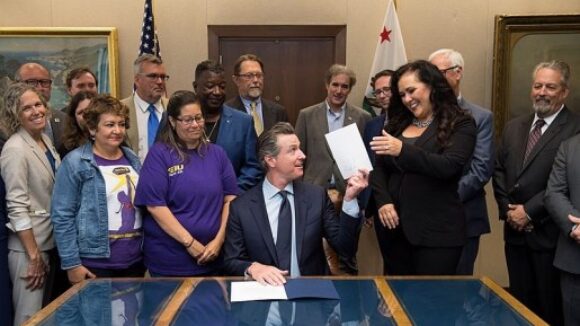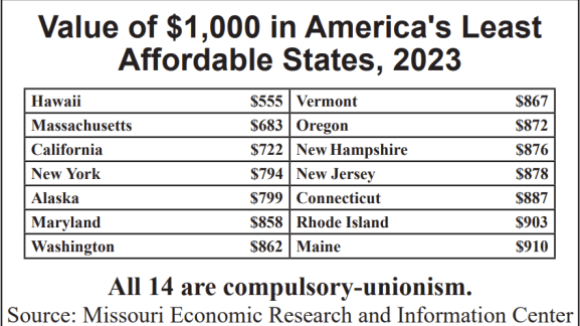‘People Have a Right to Make Their Own Choice’
Avelo employee Kim Howard believes all the firm’s flight attendants should get to vote on continued AFA rule. Credit: WTNH-TV (ABC,…
As Right to Work legislation finds its way back to the top of the legislative agenda in the state capital, Andrea Neal looks at the benefits of enacting a Right to Work bill in the Hoosier State:
It doesn’t take an economist to spot the common thread in these recent economic development headlines:
- Chattanooga, Tenn., July 29: “Volkswagen hires 2,000th employee.”
- Shreveport, La., July 28: “NJ-based bag manufacturer to build Louisiana plant.”
- Decatur, Ala., July 21: “Polyplex to build $185 million plant.”
- West Point, Ga., July 7: “Kia builds vehicle No. 300,000.”
All four stories have Southern datelines. All come from states with right-to-work laws, which prohibit labor contracts that [force] employees to join a union or pay a union representation fee.
This is the issue that prompted the five-week House Democratic walkout during the 2011 Indiana General Assembly. The Democrats — a minority in both House and Senate — had no other leverage. So when a right-to-work bill came up unexpectedly in a session that was supposed to be about the budget, redistricting and education, they bolted. Republicans capitulated and took the legislation off the table.
In 2012, it will return with a vengeance, and this time Democrats can’t avoid it. Right-to-work has been promised a full public airing. The Interim Study Committee on Employment Issues, chaired by Sen. Phil Boots, R-Crawfordsville, is taking a first crack this summer and hopes to recommend a bill by November. Gov. Mitch Daniels, who didn’t support the bill last session, has hinted he might this time around.
The debate goes back to 1935 when Congress passed the National Labor Relations Act protecting employees’ rights to form, join and be involved in unions. One section of the law permitted contracts that made union membership a condition of employment. Congress modified that language in 1947 when it said states could prohibit these. In response, 22 states passed right-to-work laws. Indiana is one of 28 that currently does not have such a law.
Predictably, at last week’s study committee hearing, business interests favored right-to-work while union leaders opposed it. The economists were divided. Richard Vedder, of Ohio University, summarized research showing that right-to-work states have higher rates of employment, productivity and personal income growth. Marty Wolfson, of the University of Notre Dame, testified that right-to-work laws result in lower wages and benefits.
Their conclusions are not mutually exclusive. If you grant Wolfson’s point, the policy question remains: Which is better? A state with higher wages for some but a weaker economy overall or one with lower wages for some and more vibrant growth, not to mention freedom of choice for the worker?
Companies are voting with their feet. To the extent that manufacturers are expanding in the United States — and few are — they are choosing the South and West where right-to-work is prevalent.
It should come as no surprise to Indiana legislators that expanding industries favor that kind of relationship. The legislative choice is between protecting unions as we know them or protecting the long-term interests of Hoosier workers.

Avelo employee Kim Howard believes all the firm’s flight attendants should get to vote on continued AFA rule. Credit: WTNH-TV (ABC,…

California’s Big Labor-concocted A.B.5, signed into law by Gov. Gavin Newsom in 2019, made it almost impossible for workers and firms to bounce back after 2020’s COVID-19 lockdowns. Now Biden bureaucrats want to federalize A.B.5!

On average, forced-unionism states are 23.2% more expensive to live in than Right to Work states. And decades of academic research show that compulsory unionism actually fosters a higher cost of living.